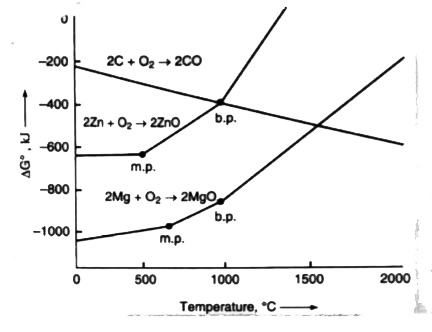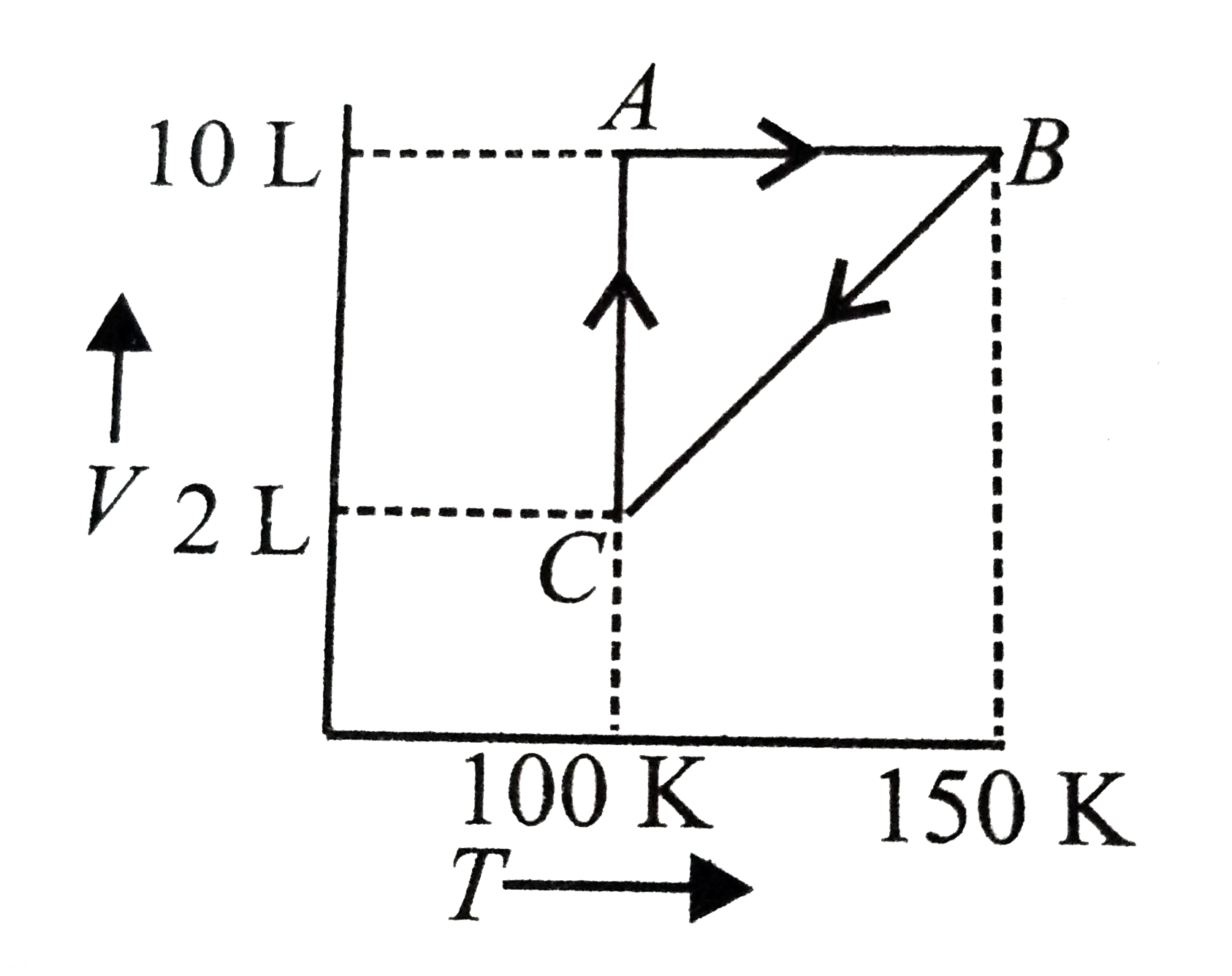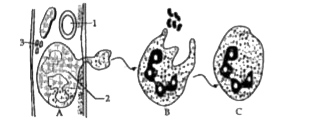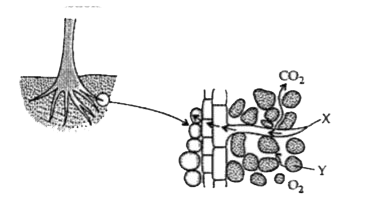Questions given below are based on the given diagram for extractive metallurgy.
(iii) The make the following process spontaneous, temperature should be :
ZnO+C→Zn+CO.
<1000∘C
>1100∘C
<500∘C
>500∘C but<1000∘C
The correct Answer is:D
To determine the temperature required to make the reaction ZnO+C→Zn+CO spontaneous, we can analyze the thermodynamic principles involved, particularly focusing on the Gibbs free energy change (ΔG) for the reaction.
1. Understand the Reaction:
The reaction involves zinc oxide (ZnO) being reduced by carbon (C) to produce zinc (Zn) and carbon monoxide (CO).
2. Identify the Conditions for Spontaneity:
A reaction is spontaneous when the change in Gibbs free energy (ΔG) is negative. The relationship can be expressed as:
ΔG=ΔH−TΔS
where ΔH is the change in enthalpy, T is the temperature in Kelvin, and ΔS is the change in entropy.
3. Analyze the Reaction:
- Enthalpy Change (ΔH): The reaction is endothermic, meaning it requires heat to proceed. Therefore, ΔH is positive.
- Entropy Change (ΔS): The reaction produces more gaseous products (1 mole of CO and 1 mole of Zn) from solid reactants, which increases disorder. Thus, ΔS is positive.
4. Determine the Temperature Condition:
Since ΔH is positive and ΔS is also positive, for ΔG to be negative (indicating spontaneity), the term −TΔS must be greater than ΔH. This leads to the condition:
T>ΔHΔS
This indicates that at higher temperatures, the negative contribution of −TΔS can outweigh the positive ΔH.
5. Refer to the Graph:
According to the provided information, the critical temperature is around 1000 °C. Above this temperature, the free energy of the products (zinc and carbon monoxide) becomes lower than that of the reactants (zinc oxide and carbon), making the reaction spontaneous.
6. Conclusion:
Therefore, to make the reaction ZnO+C→Zn+CO spontaneous, the temperature should be above 1000 °C.
Final Answer:
The temperature should be above 1000 °C.
---
The reaction involves zinc oxide (ZnO) being reduced by carbon (C) to produce zinc (Zn) and carbon monoxide (CO).
A reaction is spontaneous when the change in Gibbs free energy (ΔG) is negative. The relationship can be expressed as:
ΔG=ΔH−TΔS
where ΔH is the change in enthalpy, T is the temperature in Kelvin, and ΔS is the change in entropy.
- Enthalpy Change (ΔH): The reaction is endothermic, meaning it requires heat to proceed. Therefore, ΔH is positive.
- Entropy Change (ΔS): The reaction produces more gaseous products (1 mole of CO and 1 mole of Zn) from solid reactants, which increases disorder. Thus, ΔS is positive.
Since ΔH is positive and ΔS is also positive, for ΔG to be negative (indicating spontaneity), the term −TΔS must be greater than ΔH. This leads to the condition:
T>ΔHΔS
This indicates that at higher temperatures, the negative contribution of −TΔS can outweigh the positive ΔH.
According to the provided information, the critical temperature is around 1000 °C. Above this temperature, the free energy of the products (zinc and carbon monoxide) becomes lower than that of the reactants (zinc oxide and carbon), making the reaction spontaneous.
Therefore, to make the reaction ZnO+C→Zn+CO spontaneous, the temperature should be above 1000 °C.
The temperature should be above 1000 °C.
Topper's Solved these Questions
- GENERAL PRINCIPLES AND PROCESS OF ISOLATION OF ELEMENTSBOOK - CENGAGE CHEMISTRY ENGLISHCHAPTER - GENERAL PRINCIPLES AND PROCESS OF ISOLATION OF ELEMENTSEXERCISE - Exs 1.1 (Subjective)
25 Videos
- GENERAL PRINCIPLES AND PROCESS OF ISOLATION OF ELEMENTSBOOK - CENGAGE CHEMISTRY ENGLISHCHAPTER - GENERAL PRINCIPLES AND PROCESS OF ISOLATION OF ELEMENTSEXERCISE - Exs 1.1 (Objective)
14 Videos
- GENERAL PRINCIPLES AND PROCESS OF ISOLATION OF ELEMENTSBOOK - CENGAGE CHEMISTRY ENGLISHCHAPTER - GENERAL PRINCIPLES AND PROCESS OF ISOLATION OF ELEMENTSEXERCISE - Archives (Subjective)
14 Videos
- ELECTROCHEMISTRYBOOK - CENGAGE CHEMISTRY ENGLISHCHAPTER - ELECTROCHEMISTRYEXERCISE - Archieves Subjective
35 Videos
- GRIGNARD REAGENTS AND ORGANOMETALLIC REAGENTSBOOK - CENGAGE CHEMISTRY ENGLISHCHAPTER - GRIGNARD REAGENTS AND ORGANOMETALLIC REAGENTSEXERCISE - Exercises Archives (Linked Comprehension)
1 Videos
Similar Questions
Questions given below are based on the given diagram for extractive metallurgy.
(v) This method is known as :
View SolutionQuestions given below are based on the given diagram for extractive metallurgy.
(iv) At 1100∘C, which reaction is spontaneous to a maximum extent ?
View SolutionFree enegry , G=H−TS, is state function that indicates whther a reaction is spontaneous or non-spontaneous. If you think of TS as the part of the system's enegry that is disordered already, then (H−TS) is the part of the system's energy that is still ordered and therefore free to cause spontaneous change by becoming disordered.
Also, ΔG=ΔH−TΔS From the second law of thermodynamics, a reaction is spontaneous if ΔtotalS is positive, non-spontaneous if ΔtotalS is negative, and at equilibrium if Δ'→talS is zero.
Since, −TΔS=ΔG and since ΔG and ΔS have opposite sings, we can restate the thermodynamic criterion for the spontaneity of a reaction carried out a constant temperature and pressure.
IF ΔG<0, the reaction is spontaneous.
If ΔG>0, the reaction is non-spontaneous.
If ΔG=0, the reaction is at equilibrium.
Read the above paragraph carefully and answer the following questions based on the above comprehension.
If an endothermic reaction is non-spontaneous at freezing point of water and becomes feasible at its boiling point, then
View SolutionQuestions given below are based on the given diagram for extractive metallurgy.
(i) At what approximate temperature, zinc and carbon have equal affinity for oxygen ?
View SolutionThe ellingham diagram for zinc, magnesium and carbon coverting into correspondingoxides is shown below.

To make the following reduction process spontaneous, temperature should be :
ZnO+C→Zn+CO
View SolutionThe ellingham diagram for zinc, magnesium and carbon coverting into correspondingoxides is shown below.

To make the following reduction process spontaneous, temperature should be :
ZnO+C→Zn+CO
View SolutionBased on the diagram given below , choose the correct statement from the following .

View SolutionConsider the given diagram for 1 mole of a gas X and answer the following question.

The process A→B represents
View SolutionStudy the diagrams given below and answer the questions that follow:

State the importance of this process in the human body.
View SolutionGiven below is a diagram depicting a physiological process in plants. Study the same and answer the following questions :

Define the part X.
View Solution
